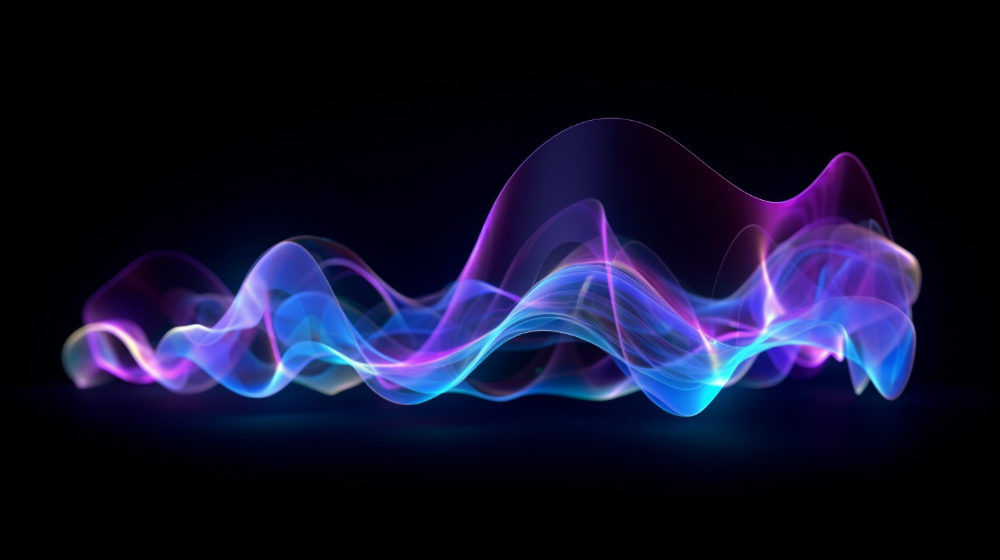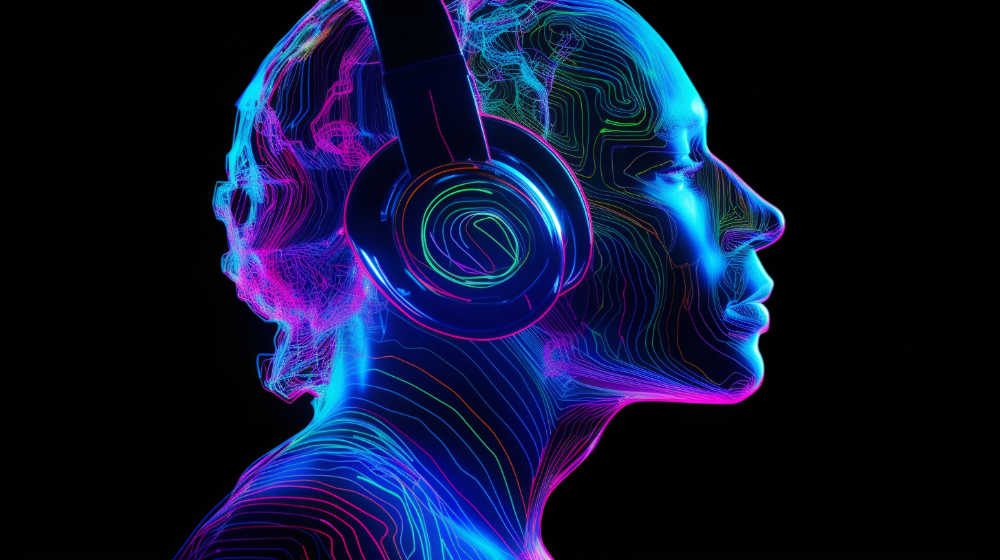
Bilateral Music – new sound hype to cure Depression and Anxiety?!
Content
In recent years, bilateral audio and bilateral music has become increasingly popular on TikTok, a widely used social media platform for short clips. A unique and auditory experience is created by listening to audio tracks designed to be listened to with earbuds and headphones. Or some even put their phone under their chin which got me interested.
TikTok’s users’ desire for innovative and engaging content demonstrates the platform’s continuous evolution and the popularity of bilateral sounds. But could this also be something for a mental health professional? Because biolateral music as it’s sometimes called has apparently not only a relaxing but a scientific focus.
In this article, we will see how bilateral music, showcases various audio engineering aspects. It shares similarities with other trends like 8D audio and binaural beats but also possesses distinctive characteristics. Unlike 8D audio, which uses panning effects to create circular movement, it is based on excessive panning. Bilateral Music intends to create new stimuli in your nervous system, whereas binaural beats aim to induce specific brainwave frequencies to feel relaxed or focused.
But for now, put your therapist aside, and let’s observe the previous subject from an audio-engineering perspective.
 #bilateralaudio #bilateralsound #bilateralmusic #bilateralstimulation
#bilateralaudio #bilateralsound #bilateralmusic #bilateralstimulation
What is auditory bilateral stimulation and how does it work?
Bilateral music helps to trigger a therapy method called EMDR, eye movement desensitization and Reprocessing. Processing and integrating traumatic memories or distressing experiences are facilitated by rhythmic activation of both the left and right sides of the body or brain.
Various methods can accomplish this, including eye movements, tapping alternating sides, or listening to bilateral music. bilateral stimulation techniques are thought to promote bilateral communication and facilitate the response to the reprocessing of traumatic information by activating both brain hemispheres.
Through bilateral stimulation, the brain’s natural healing mechanisms are supposed to be engaged, reducing the emotional intensity of past traumas and enhancing emotional well-being. So you can think of it that way: your ears talk to your eyes and make them move rapidly.
How Is it Connected to EMDR and Bilateral Stimulation?
By activating both hemispheres of the brain, bilateral stimulation promotes bilateral communication and aids in integrating and resolving traumas and decreased worry. The goal of emdr music therapy is to reduce the emotional distress associated with traumatic memories and promote healing and emotional well-being by incorporating bilateral stimulation.
How is Bilateral Music and audio supposed to Conquer Anxiety?
By alternating music or rhythms between the left ear and right ear, bilateral music is believed to alleviate feelings of anxiety through its effect on the brain and nervous system. Bilateral music’s rhythmic and alternating nature stimulates the brain’s hemispheres, promoting synchronization and balance.
As a result, stress responses can be reduced while emotional and physiological disturbances are balanced. This means that the autonomic nervous system can be regulated. Bilateral music can reduce anxiety and promote relaxation by providing soothing and calming qualities, easing anxiety symptoms during sleep and promoting a calm state. It may be even helpful vor people suffering from PTSD (post traumatic stress disorder).

Exploring the Social Media Hype
There are several reasons why bilateral music has exploded on TikTok. First, bilateral music provides a new listening experience. The three-dimensional effect created by binaural recording techniques sets their content apart from others. Bilateral stimulation adds a strange change of volume from one ear to another. Therefore it is often confused with ASMR (Autonomous Sensory Meridian Response) and relaxation videos, but more on that later.
As mindfulness and mental well-being become increasingly popular, bilateral music further fuels demand since it promotes relaxation and calmness – something you rarely find in the loud world or reels. So there seems to be a new trend to creating more positive feelings.
Furthermore, TikTok’s ability to easily create and share bilateral music enables users to incorporate it into their content, contributing to its popularity. Bilateral music has also been used in therapeutic applications to treat anxiety, depression, and stress (bilateral stimulation/tapping/music for anxiety)
It is also used to support meditation and yoga practices. The widespread use of bilateral music has made it one of the most popular soundtracks for relaxation and mindfulness.
Due to the influence and reach of social media platforms, such as TikTok, bilateral music trends have become viral. Users who create and share content featuring bilateral music quickly gain traction through likes, shares, and comments, resulting in widespread exposure. Social media platforms promote popular content to a wider audience through their algorithmic nature, further amplifying the trend.
Also, these platforms’ interactive and participatory nature fuels the trend’s virality by encouraging users to join in. The power of social media to rapidly spread and popularize trends play a significant role in the surge of bilateral music, causing it to become a cultural phenomenon. There is a natural tendency to find such short clips on YouTube Shorts and Instagram Reels now.

Now let’s understand the concept of Bilateral stimulation and Audio from an engineering perspective while sailing through its unique characteristics. Continue reading to find out why I find them weird.
Explain the concept of bilateral audio and its unique characteristics
A bilateral music track is designed to be listened to with earbuds or headphones, creating an interesting auditory experience. I wouldn’t call it immersive or even spatial. All I hear is that there is basically a sound or music panning very fast from left to right.
As a result of its distinct characteristics, it has become increasingly popular in the media and entertainment industries for improving audio experiences. So it’s hard to explain what it even is and why it is being used for emdr therapy, so let’s have a listen.
What is happening soundwise?
What I found really interesting is that people just put their smartphone under their chin as seen above. This is a workaround when you don’t have headphones nearby. This works because nowadays most mobile phones of built in two speakers. One at the top and one at the button. So by flipping your phone the button speaker hits more of your left ear and the top speaker more of your right ear so to say. But as you can guess, this is not the ideal sound experience.

Here are some of the comments since reactions vary. Some people love it and it has some sort of esoteric meaning for them. While others even feel discomfort from the distancing effect.
My eyes closed and have always followed the voice (which shows that the created bilateral sound was a success). it makes my eyes dance
I lie awake so often at night and can’t get to sleep. I hope this might help
My eyes started shaking and I got a really tight feeling in my upper chest…. (so not for anybody it works, especially high sensitive people)
Nope I get the opposite effect, feel panic & nauseous
Difference from other hypes (8D, ASMR, binaural beats)
What’s the difference to 8D audio?
8D audio is a term used to describe a type of audio production technique that simulates a three-dimensional sound experience. It creates the illusion of sounds moving around the listener’s head, giving a sense of depth and spatial positioning. However, it’s important to note that there is no standard or universally accepted definition for 8D audio, and the term is often used in a subjective and artistic manner rather than a technical one. here is everything about 8D audio and music you need to know.

8D audio is designed to create a more immersive listening experience for entertainment while bilateral sound stimulation is intended to provide relaxation or meditation benefits. Bilateral sound stimulation uses simple frequency manipulation, presenting different frequencies to each ear. It doesn’t involve complex spatial effects or audio processing such as with 8D sound.
Or watch this video with an example to listen to: https://www.youtube.com/shorts/OTvwWwICbos
What’s the difference between binaural beats?
Binaural beats are a type of audio engineering technique used to create a single new sound by combining two slightly different sound frequencies, one in each ear. This creates a perception of a third sound that is not actually present. Binaural beats have been used in various forms of therapy, such as music therapy and meditation, to help induce relaxation and focus.
Bilateral sound stimulation, on the other hand, is an auditory experience that impacts both the left and right brain in the same way. The tone is not playing constantly on the left and right stereo channels. Instead, it is moving rapidly while the frequency stays the same.
What’s the difference between ASMR?
ASMR, or Autonomous Sensory Meridian Response, is a phenomenon that has been gaining popularity in recent years. It is described as a pleasant tingling sensation that can be experienced when listening to certain sounds. These sounds are often soft and calming, such as whispers, gentle speaking, or the sound of nails and brushes running across a microphone.
Interestingly one could consider that some of the bilateral sounds could be categorized as ASMR sounds .
The main difference between ASMR and bilateral sound stimulation from an audio engineering perspective is the purpose behind each technique. ASMR is designed to evoke feelings of relaxation and comfort in the listener while bilateral sound stimulation is used to create a more trauma or even anxiety treatment.

Conclusion on bilateral music
Bilateral music provides a unique and listening experience – if this is immersive or not, decide for yourself. The trend aligns with the growing interest in mindfulness and mental well-being. The viral nature of social media platforms, like TikTok, plays a significant role in amplifying and spreading the bilateral music trend.
Without proper equipment, the three-dimensional effect may not be possible – yet still is promoted by holding your phone under your chin. For a seamless bilateral music experience, audio engineering techniques must be optimized, and compatibility must be ensured. So I still have some questions myself unanswered, but I hope this helps to process what is even happening.
Want to create bilateral sound stimuli or bilateral music for your immersive project? Hit me up and we’ll discuss!
Get in contact